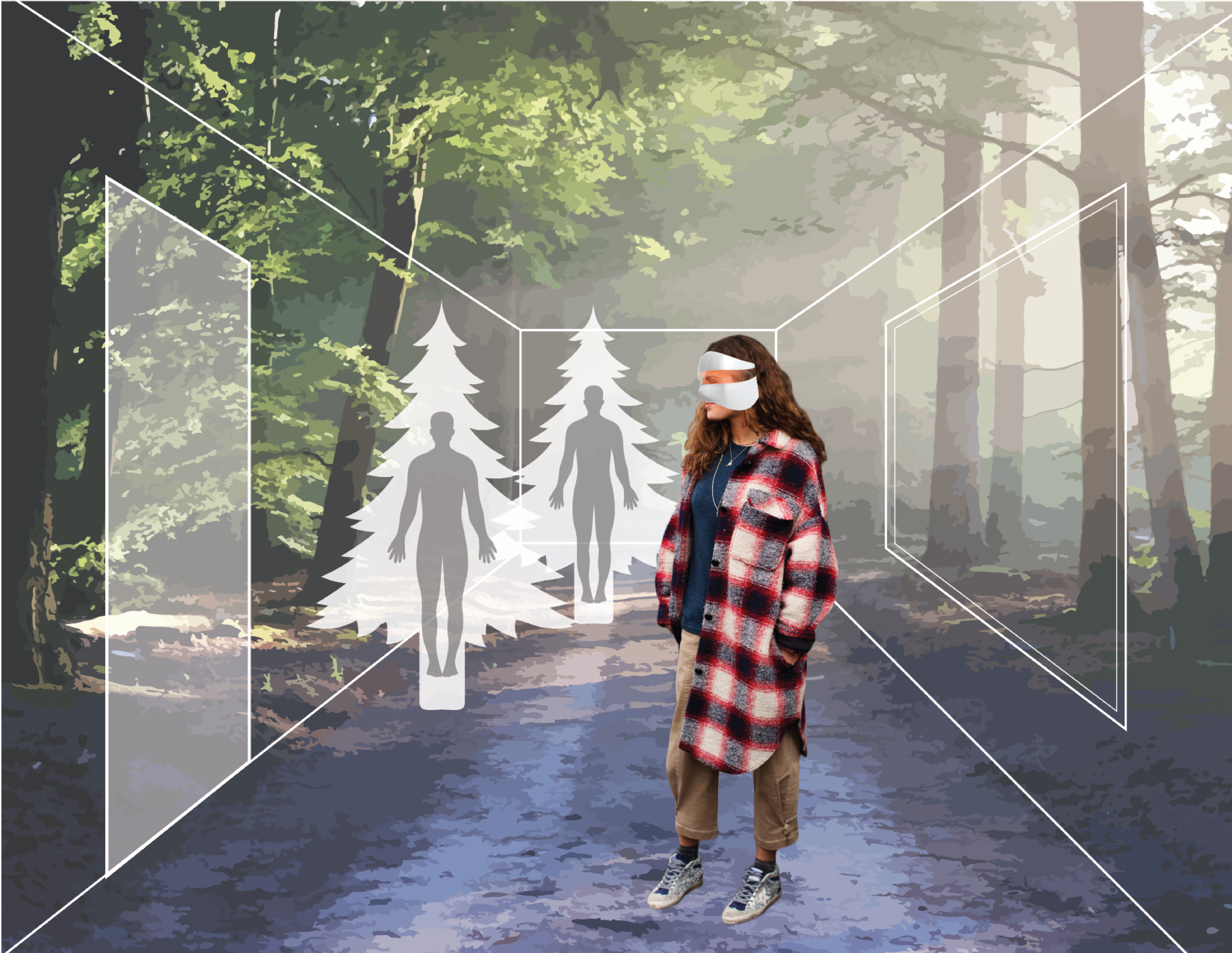proxemic products
A set of critical design proposals that attend to proxemics, the study of human behavior as it relates to one’s desired physical space from others. Proxemics identifies different zones of interpersonal distance; the amount of desired distance relates to the type of relationship and comfort between individuals. Urban settings with high population density can stress people who feel they do not have enough personal space and increase people’s sense of territoriality. Public transit systems often exacerbate this problem due to confined space and high occupancy during rush hour; the desire for personal space is heightened in public transportation settings where people are surrounded by complete strangers and experience sensory overload. People try to deal with the stress caused by a lack of personal space through aggression, introversion, and avoidance. The need for personal space from your own family members and in intimate settings is also considered. These interactions are not with anonymous strangers, but focuses on the quotidian experiences that take place in the home. People sometimes desire more alone time and have difficulty taking personal space due to familial obligations, such as childcare, or a lack of private spaces in their home. People who cannot define a sense of personal space in a private setting may be even more reactive to crowding in public settings, since the experience of invasion from others is relentless, and the home provides no place to physically or psychologically retreat or escape.
personal space spray
is used to keep people from sitting or standing close to you while traveling on public transportation. The two-part spray has an odorizer and a neutralizer; the odorizer releases a noxious smell that people find so unpleasant they will actively seek to avoid it. The neutralizer chemically counteracts the chemicals of the odorizer to eliminate any unwanted smells so that the user can continue with their day without the offensive stench.
What aspects of traveling with other people do we really find intolerable? Would we tolerate negative sensory experiences as long as they are self-administered and controllable?
augmented commute
is a wearable device that uses augmented reality and noise canceling technologies to make it seem as if a crowded public transportation vehicle is empty. The device cancels out the sounds of other people and machines in the environment to mitigate the overwhelming stress of noise. The device uses computer generated visualizations to trick the user into thinking they have personal space even in very crowded environments.
How can we balance the desire for chance encounters in an increasingly digital, isolated world? If we erase the existence of others can we still treat them with respect?
play my ride
is a wearable device that gamifies a stressful commute. The device uses augmented reality to turn a crowded train car into a virtual environment. Real-world obstacles are transformed into virtual avatars that allows users to easily navigate through the physical world, while achieving a sense of play. Different virtual environments can be selected, the device uses multiple sensory experiences, visual, olfactory, and auditory, to craft a fully immersive experience that removes or disguises unpleasant elements from your current surroundings.
As dense urban settings become more ubiquitous and our natural world disappears, how can we cope with stressors while maintaining our technological lifestyle? What control do we have over how others see us? Is it ethical to treat others as objects in our own personal digital worlds?
territoriality cloak
is used to keep people from bumping into you while traveling on a crowded subway train. The cloak has embedded proximity sensors that sense encroaching strangers, lasers display the user’s personal space zone, and allows the user to modify the settings and distance in different environments. When the proximity sensors detect a person inside the personal space zone, loud high-pitched alarm sounds are emitted to signal an invasion.
What if we treated public spaces as defensible? How do we decide who is the invader?
cushion camo
is a pneumatic wearable device that helps you to hide from members of your family inside the home. The cushion camo system contemplates the use of technology to facilitate a retreat from daily obligations. The system uses a set of inflatable cushions, upholstered in matching fabric with the family sofa, so that a person can camouflage themselves as a piece of furniture in the home and avoid unwanted social interactions.
What happens if we cannot outsource our household responsibilities? How can technology help caregivers cope with stress, exhaustion and illness? Is physically retreating from others in your home more offensive than mentally retreating through digital media?





